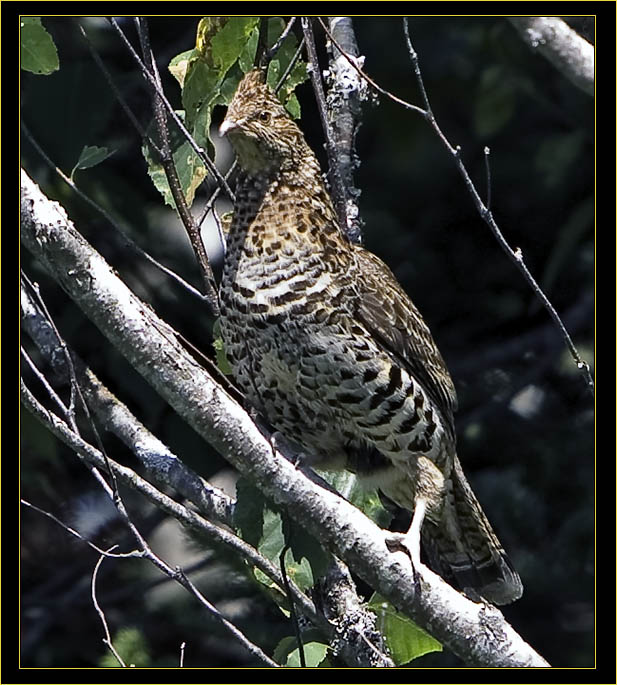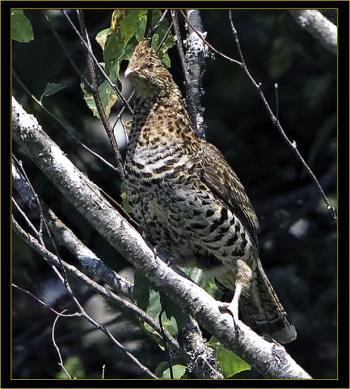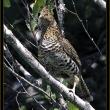Drumming up attention
We always called them “partridges” growing up here in Maine. Probably most people still know them by that name.
But the official American Ornithologists’ Union name for them is ruffed grouse, and that’s what you’ll find then called in your bird book.
We were in the Wiscasset Town Forest on a recent weekend morning when we heard the unusual and often overlooked sounds of a displaying male ruffed grouse. It’s incredibly easy to mistake the sound for a distant tractor engine—very low frequency thumps, starting off slow then speeding up to a whir. The sound is so low-pitched that it can get lost in background noise or leave you wondering if your ears are malfunctioning. Often, the bird is much closer than you would think, based on the sound.
Despite the confusion it may cause, the sound of a ruffed grouse drumming is a much-loved and sought-after sound in a Maine forest. Male ruffed grouse create it by standing on a fallen log, stump, or an open mound in the woods and snapping the wings forward and back. High speed photography proved that the sound does not come from the wings striking anything but rather from the noise of the air rushing in to fill the vacuum that results from the incredibly rapid wing movements.
The males do this drumming to attract females and convince them that they are the best male with whom to mate. Ruffed grouse have a polygynous mating system in which a single male mates with multiple females. Often a number of male grouse will have drumming platforms within earshot of each other, a type of communal breeding display called an “exploded lek.”
In more typical leks, like those of prairie chickens and sage grouse, all males come to the same central location and display at the same time. If a female ruffed grouse approaches a drumming male, he will do a display not unlike a wild turkey, spreading his tail, fluffing his black ruff, and strutting around like he is the bird to mate with — and he may well be!
After mating, a female grouse will go off on her own to find a suitable place to lay her rather large clutch of 9-14 eggs, which she places in shallow depression on the ground. Typically here in Maine, the peak of ruffed grouse drumming takes place in late March and April with nesting well underway in April. There is often a small, secondary peak in drumming activity in June that may be spurred on because females lost a clutch of eggs and are trying again.
The eggs typically take just over three weeks to hatch, but the young are “precocial,” meaning they hatch fully feathered and able to walk and feed themselves within minutes. When all the eggs have hatched, the female grouse leads the young birds away to places that provide abundant food and cover from predators. If a predator approaches, she gives an alarm call to alert the chicks to hide and stay still while she attempts the risky business of luring the predator in the other direction.
The male, meanwhile, is not involved in any way and may even be drumming again to attract another female and convince her that he has the best genes to be carried into the next generation.
Who would have thought that right here in Maine, we’d have a bird with such an exotic mating system!
Event Date
Address
United States
























